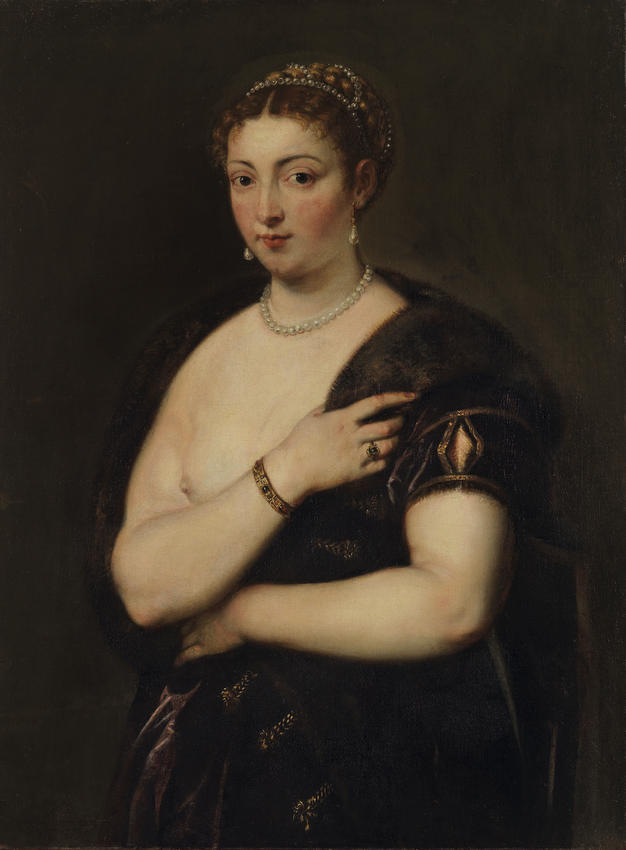We acknowledge the Traditional Owners of the land on which the Queensland Art Gallery | Gallery of Modern Art stands and recognise the creative contribution First Australians make to the art and culture of this country.

Peter Paul Rubens / Flanders 1577–1640 / Young woman in a fur wrap (after Titian) c.1629–30 / Oil on canvas / 91.8 x 68.3cm / Purchased 1980. Queensland Art Gallery Foundation / Collection: Queensland Art Gallery | Gallery of Modern Art
Peter Paul RubensYoung woman in a fur wrap (after Titian) c.1629–1630
On Display: QAG, Gallery 9
The painting is a copy after Titian’s work Girl in a fur wrap, in the collection of the Kunsthistorisches Museum, Vienna. It may have been created after Rubens’s visit to England in 1629–30.
It was a common practice for northern European and Flemish artists to copy and study the works of Italian painters, such as Titian, Paolo Veronese, Andrea Mantegna, Michelangelo and Raphael, in order to refine and hone their painting skills. Artists travelled to study these works at close quarters. Copying by doing, rather than studying reproductions, was the preferred option for professional painters as it provided an insight into composition, pigments, technique, tonal orchestration and colour glazing.
Rubens was 23 when he went to Italy in 1600, staying for a period of eight years where he was employed in the court of Vincenzo Gonzaga, the Duke of Mantua. The Duke possessed an impressive collection, including works by Mantegna, Raphael and Titian, providing Rubens with his first opportunity to study the paintings of Titian.
Rubens’s education included classical and humanist training and he was fluent in many languages. His artistic career was highly successful, but he was also a businessman, scholar, collector, courtier and diplomat.
One of Rubens’s most important influences was the time he spent in Italy (1600–08). Whilst in Italy, he made many copies of works by Michelangelo, Tintoretto and Titian. In 1608, he travelled to Antwerp, which thereafter became his home. Antwerp was the cultural centre for the Counter Reformation in Flanders, and Rubens undertook many religious commissions, including major triptychs for the Antwerp Cathedral and works for the Jesuit Order.
By the 1620s, he was recognised as the leading artist of his time with commissions from the courts of France, Spain and England.
Discussion Questions
1. This painting was created almost 400 years ago. What clues suggest the time and place of the portrait? Why do you think Rubens copied other artists’ works throughout his life?
2. What visual effects has the artist used to create a soft, tender and intimate portrait? Consider how the pose, gaze and clothing of the figure enhance our experience of viewing the work.
Classroom Activities
1. As you study this painting, think about the woman’s pose and dress and how these indicate her place, both historically and socially. Create your own ‘copy’ of the painting, changing the figure’s clothing and jewellery to reflect contemporary fashion. Discuss the portraits created as a class alongside those of Titian and Rubens.
2. Plan a series of photographic portraits of a friend. Provide clues in the portraits to convey your friend’s personality. Change the composition and lighting, and use different camera angles and clothing, to capture the likeness of your friend. Choose one of these photo-portraits to explore a particular mood. Use digital manipulation or pencil/pastel to further enhance the mood you have created.